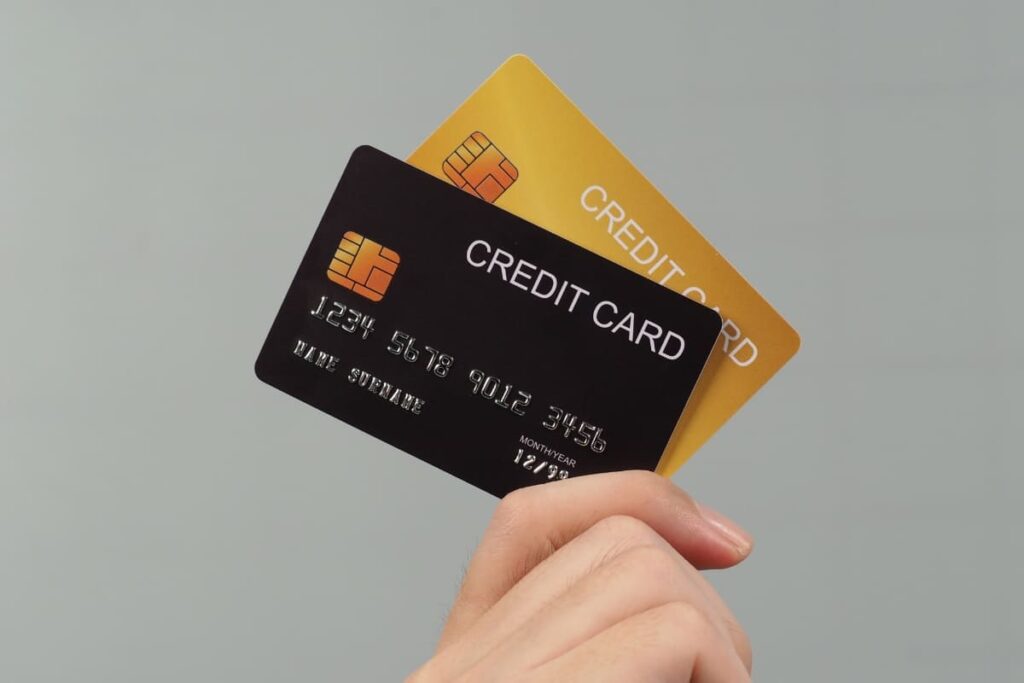The advancement of technology has impacted various areas of modern life, and the financial sector is no exception. In recent years, digital credit cards have been gaining increasing popularity in the United States.
With the convenience of storing the card on your phone and making payments with just a few taps, consumers are increasingly adopting this technology. But is this growing popularity of digital cards signaling the end of physical cards?
The rise of digital credit cards

Digital credit cards emerged as a response to the demand for faster, more secure, and convenient transactions. Many financial institutions began offering customers the ability to access their cards directly through mobile apps or digital wallets, such as Apple Pay, Google Pay, and Samsung Pay. This movement not only reduces the reliance on physical plastic but also makes life easier for consumers.
The main advantage of digital cards is speed. Imagine not having to wait days for a physical card to be shipped in order to start using available credit. With a digital card, approval is often instant, and usage can be enabled immediately. Furthermore, the ability to add the card to digital wallets provides an additional layer of security, as the physical card details are replaced with encrypted tokens, preventing sensitive data from being exposed.
However, the rise of digital cards is not solely driven by convenience. In an increasingly digitized world where smartphones are practically an extension of the human body, integrating finances into the devices we use daily makes perfect sense. Mobile and digital payments have growing relevance, especially among younger generations who prefer fast, technological solutions.
Enhanced security benefits
One of the strongest reasons for adopting digital credit cards in the U.S. is the level of security they provide. With the rise of financial fraud and identity theft, consumers are becoming more cautious about their data and transactions. Digital cards offer a solution that can mitigate some of these risks.
When a card is used through a digital wallet, the actual card details are not transmitted during the transaction. Instead, a unique, encrypted token is sent, meaning that even if someone attempts to intercept the data during the purchase, they would not have access to the actual card information. This level of security significantly reduces the risk of cloning and data theft.
Additionally, the ability to block or delete the card directly from the app, in case the phone is lost or stolen, provides an extra layer of protection. Digital cards, therefore, address a growing need for more secure transactions, something that physical cards alone cannot fully guarantee. The trend is that more and more consumers will opt for digital cards due to this added confidence.
However, there are still concerns, such as what happens if the smartphone stops working or there is no access to the internet. In these cases, having a physical card still offers a solution. Although these situations are rare, they reveal that the transition to digital needs to be accompanied by a robust technological infrastructure.
Environmental impact and sustainability
An often overlooked aspect in the discussion about the rise of digital cards is the environmental impact. The production of physical cards requires plastic, a material that, as we know, is harmful to the environment. The transition to digital cards has the potential to reduce plastic production and, consequently, the disposal of harmful materials into the environment.
According to some estimates, millions of physical cards are issued annually in the United States. When these cards expire or are replaced, they often end up in landfills, contributing to the growing plastic waste crisis. With digital card usage, this demand for plastic is eliminated, which, in the long run, can help reduce the environmental footprint of the financial industry.
Moreover, banks and fintech companies are increasingly committed to adopting sustainable practices. Many financial institutions have promoted eco-friendly initiatives, such as creating biodegradable or recycled-material cards. However, digital cards offer an even simpler solution: total elimination of plastic, without compromising functionality or security.
With the growing environmental awareness, sustainability could be a major motivator for the migration to digital. The reduction in plastic usage is a direct contribution to the planet, and consumers seeking to make more eco-friendly choices may see digital cards as an opportunity to align their finances with their environmental values.
Resistance to change and the importance of choice
Despite the growing popularity of digital cards, a significant portion of the population still hesitates to abandon physical cards. This is largely due to habit and the comfort many still find in carrying something tangible in their wallet. For many, having a physical card represents an additional layer of security.
Furthermore, access to technology is a factor to consider. Not all consumers have smartphones compatible with digital wallets or have access to high-speed internet, making the transition to digital cards less inclusive. The reality is that physical cards are still necessary in some situations and for certain demographics.
Banks and fintech companies are therefore striving to maintain a balance between the two worlds, offering customers the option to have both a digital and a physical card. This hybrid approach ensures that consumers can choose what works best for them, taking into account their needs and preferences.
Ultimately, the decision to replace physical cards with digital ones is not something that will happen overnight. Although the future looks promising for digital cards, a complete transition will only be possible when consumers feel fully comfortable with the change and when all technological and cultural barriers are overcome.
Conclusion
The end of physical cards may be on the horizon, but there is still a way to go. The popularity of digital cards is on the rise, driven by convenience, security, and sustainability. However, resistance from part of the consumer base and the need for a more robust technological infrastructure suggest that this transition will be gradual.
The future of payments may be digital, but for now, the physical card still holds its place, balancing tradition and innovation.
